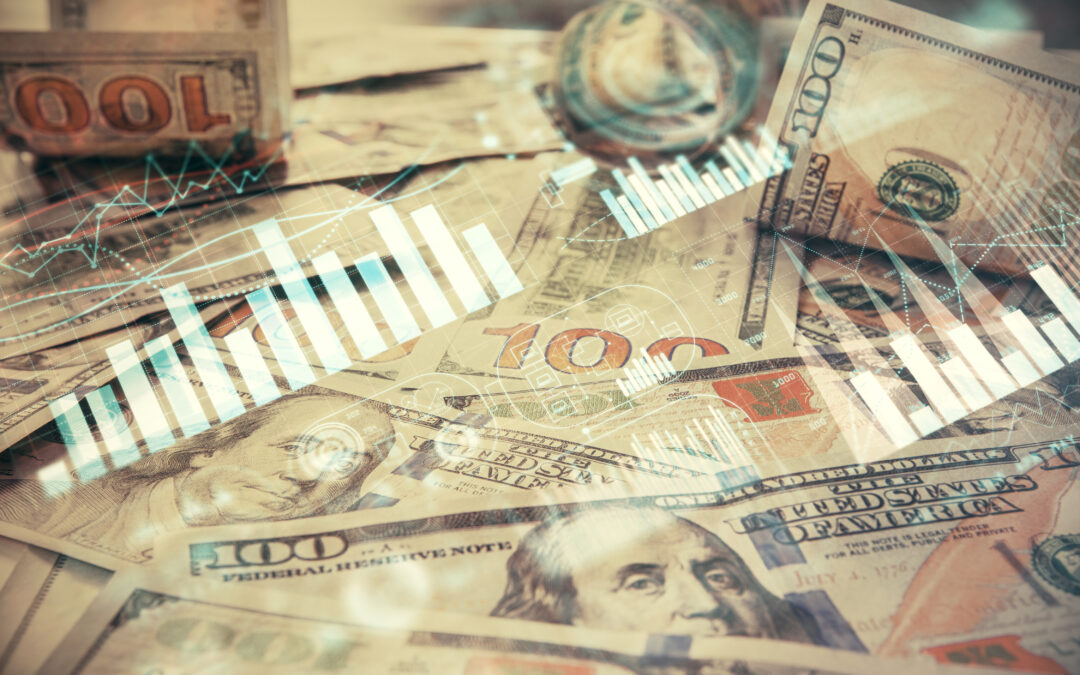After a rough August the markets continued their downward trend with the S&P 500 losing 4.87% after the loss of 3% in August. The S&P finished the 3rd quarter down 3.65% but remains positive 11.68% year-to-date. The Dow Jones Industrial Average similarly declined 3.5% after a drop of 3% in August. The Dow finished the quarter down 2.62% and sits just 1.09% positive year-to-date. The Nasdaq Composite fell 5.9% after falling 5% in August. The tech-heavy index shed 4.1% during the quarter but remains positive 26.1% year-to-date. The benchmark U.S. treasury yield increased to 4.59% on Sep 28 up from 4.18% on Sep 1 and hit a 15-year high of 4.61% on Sep 27. If the Fed moves forward with the anticipated rate hike in November, it will mark the twelfth hike since the commencement of policy tightening in March 2022.
While markets have generated positive returns thus far in 2023 as resilient economic data and corporate fundamentals have outweighed recession concerns and tighter credit conditions, we expect market volatility to be episodic as central banks attempt to navigate a soft landing.
As yields increase and the markets become more volatile, we thought it would be worth looking at the source of returns for stocks over the past few years. Typically, as markets move up, earnings must support the move. The three reasons stocks go up are increased earnings, stock buybacks, and dividends. We are choosing to ignore the short-term reason – hype. Thus far in 2023, earnings have not improved, so we thought we would look at the other two factors that drive performance.
Both cash dividends and stock buybacks fell on a quarter-over-quarter basis in Q2’23. Over the twelve-month period ended June 2023, shareholder returns of dividends and share repurchases totaled $1.389 trillion, down from the record $1.547 trillion over the twelve-month period ended June 2022. Notably, the largest 20 companies in the index accounted for 52.0% of all buybacks in Q2’23, above the historical average of 47.2%, according to S&P Dow Jones Indices. Given the backdrop of tighter monetary policy, the threat of an economic recession in the U.S., and estimates that the companies that comprise the S&P 500 Index may experience negative earnings growth this year, it does not surprise us to see smaller companies find other uses for excess capital aside from buybacks. That said, dividend distributions remained relatively consistent over the time frame above. In our view, this is to be expected. Generally, companies tend to avoid cutting their dividends, as the action can be seen as an indication of financial weakness.
According to Capital Group, the parent company of American Funds, there is now over 5 trillion dollars in money market accounts which is up from the 3-year trend of just over 3 trillion. Sitting in money market funds today may feel comfortable with a roughly 5% yield, especially after an extended period of experimental zero interest rate policy post-global financial crisis. Here is the downside, the benefit of remaining in cash at current yields is eroded by today’s moderate inflation aka inflation-adjusted-returns. Additionally, these cash-like holdings may see little additional upside as the Fed finishes hiking rates and as the market believes, begins to lower rates to restart the economy. The market had been anticipating the Fed to be ‘on-hold’ by now and possibly lowering rates sometime in 2024. After the recent Fed meeting, the market moved their ‘hold’ and their ‘lower rates’ predictions out 6 – 9 months. Nevertheless, once the Fed starts to lower rates, bond values go up while money market values do not.
This is where the math matters. History shows that in the 18 months after the Fed ended hikes in the last four cycles, yields on cash-like investments have traditionally decayed rapidly. The 3-month Treasury yield, a benchmark Treasury security with a yield similar to cash-like investments, fell an average of 2.5%. If history were to repeat itself, money market fund yields would decline, and investors would be better served by being actively invested in stocks and bonds.
For now, what will drive the Fed and the markets? It’s all about jobs data. The nonfarm payroll report carries the most weight by far as it provides the most detailed breakdown of the labor market. In addition to the headline number, investors will focus on the unemployment rate and wage inflation. This brings us no joy to say, but what Wall Street wants to see is more pain on Main Street. The thinking: If unemployment ticks up and wage gains slow, inflation will fall since there will be fewer dollars chasing goods and services. That, in turn, will help keep the Fed on pause as we await the impact of prior hikes. Also important to the market will be the ISM reports and factory orders, which provide insight on manufacturing (about 12% of U.S. GDP). Manufacturing has been contracting for the last 10 months. That trend is not expected to change with the September report, but investors are looking for the rate of contraction to slow.
Check out my monthly MarketWatch blog at: http://wcmtexas.com/marketwatch
Have a question? Let me know! Email me at kcompton@wcmtexas.com.

